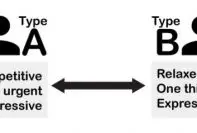Thematic Apperception Test, also known as TAT, was first developed by the American psychologist Henry A. Murray and lay psychoanalyst Christiana D. Morgan in 1930s. The idea for the test emerged after an student of Murray, Cecilia Roberts, enquired to the professor about the possibility of using Henry’s test in a clinical setting to explore the underlying dynamics of her ill son’s personality.
How TAT works?
The logic behind the test working is that subjects tend to interpret or describe ambiguous situations based on their own past experiences and motivations in the form stories. This could either be conscious or subconscious. The rationale behind the successful implementation of the test is that the subject lowers his/her guard to the examiner while depicting the story. This then leads to divulging of much-valuable information about the subject.
The test is often applied on individuals in a group as a series of tests to analyze and evaluate their personality. TAT test has been successfully administered to pinpoint information about a person’s view of the world and his other attitudes towards others and the self.
Through the stories the subjects tell about the pictures, the examiner elicits information like the subject’s expectations in life, relationship with friends and family, viewpoint towards the elderly and younger ones and so on.
Other than the stories itself, the examiner also evaluates the manner in which the subject depicts the story. Factors like voice tone, body signs, posture, hesitations and various other signs are also taken into consideration.
For example, a person might be hesitant to tell a story if it relates with her family. She might avoid telling it and will make up an excuse like she doesn’t like the card. Her hesitation indicates the subject to have family issues.
Whom TAT is applied on?
- TAT is often applied on individuals to assess them one by one in order to deem their worthiness for a certain job. The sectors that require their job prospects to be evaluated with TAT usually demand dealing with people and ability to cope with psychological stress on a day-to-day basis. For example: law enforcement, medical field, military, diplomatic service, and so on.
- TAT is also applied on people with mental issues, in order to diagnose them for their psychological problems. TAT helps identify the personality of such individuals, thus helping them to receive appropriate treatment.
- As a part of research, TAT have also been administered on individuals who have had traumatic experiences in the past.
- Another part of research focused on administering individuals involved in violent crimes, like series of sexual assaults, serial murders and so on. The results indicated that such individuals had different personality from the normal, and was also somewhat identical to other individuals involved in similar crimes.
Whom TAT isn’t applied on?
- TAT isn’t applied on individuals as a differential diagnosis for their mental disorders. The evaluation acquired as a result of TAT is merely used to compliment the previously diagnosed results, and isolate the personality of the subject.
Procedure
This projective test is also regarded as a picture interpretation technique as it consists of a series of drawings that give a picture of human figures in various ambiguous situations. The test consists of 31 cards, 30 with pictures and a black card. Subjects are then asked to interpret the pictures by creating a story describing the situation of the person in the cards. The blank card is provided with the goal to ask subjects to create their own scene and story.

Designated sets of 20 pictures are administered to men and women, while the two other sets are administered to boys and girls. Murray recommended the test to be administered in two 1-hour sessions, consisting of 10 cards each.
The instructions of the test begins as
“This is a test of imagination, one form of intelligence, let your imaginations have its way as in a fairy story and tell what the people in the picture card are doing.”
Researchers encourage the subjects to create as dramatic story as possible. It is a must for the story to have a title, a beginning, a body, a hero and the end. The general idea is that with their story, subjects reveal their needs, desires, along with their hidden motivations, expectations and intentions, which otherwise would not be out for display on the open. The test also has a standard scoring system.
[Related: Detailed Procedure of Thematic Apperception Test]
Critical Evaluation
Being a projective test, the biggest question marks TAT receives is in terms of its validity and reliability. Another fundamental problem with TAT is that the circumstances the story is presented in might produce a different story from the subject each time.
Critics of TAT cards have always labeled the characters and environments are old-fashioned and even out-dated. It’s quite logical too to think that patients might have a hard time identifying with the stimuli, since the cards were developed in the 30s.
Matthew Narron, Psy.D. wrote a dissertation in 2005 attempting to address all the criticisms seen in the old TAT. The results were then clear that the old TAT were mostly based on the specific time references eliciting similar answers, when compared to the new TAT.
Applications

The TAT is found useful in any comprehensive study of personality and in the interpretation of behavior disorders, neuroses, psychoses and psychosomatic illnesses. The test can thus help in the greater understanding and awareness of an individual. TAT, similar to RT (Rorschach Inkblot Test) being a projective test is peculiarly effective when combined with other forms of analysis, for instance, psychotherapeutic interviews or short psychoanalysis.
TAT is also used as professional assessment service. Professional psychologists use the test to help the client understand themselves better. This can help the clients to work on themselves recognizing their own personality, hence enhancing their personal growth.
How is TAT different from Rorschach Test?
Rorschach Test helps in the understanding of personality dynamics from perception, whereas the TAT is used to understand personality dynamics from apperception. To put in simple words, RT scoring depicts how the person sees the world. On the other hand, TAT focuses on how the person understood and made meaningful people’s motives, expectations, intentions and in social situations.



